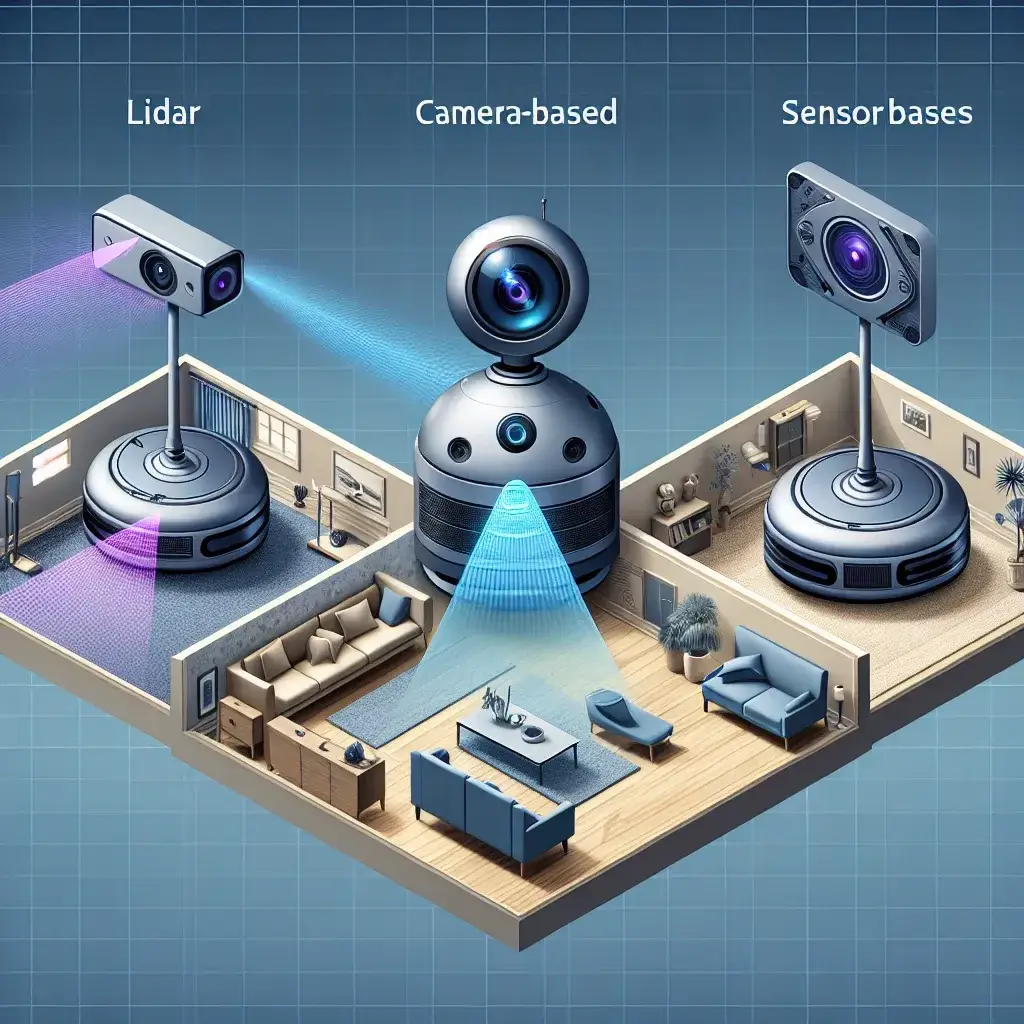Robot Vacuum Navigation Systems Compared: LiDAR vs. Cameras vs. Sensors
Introduction
In recent years, robot vacuums have revolutionized the way we clean our homes. Among their most critical features is their navigation system, which determines how effectively they can navigate your living space. The primary technologies used in these navigation systems are LiDAR (Light Detection and Ranging), cameras, and various sensors. Each technology has its unique advantages and drawbacks, which we will explore in this article.
Understanding Robot Vacuum Navigation Systems
Robot vacuums require advanced navigation systems to map and clean efficiently. The navigation system helps the robot understand its environment, avoid obstacles, and create a cleaning path. The three primary technologies—LiDAR, cameras, and sensors—each employ different methods to achieve this. Let’s dive deeper into each one.
LiDAR Navigation
LiDAR technology uses laser light to measure distances and create a detailed map of the surroundings. The robot emits laser beams that bounce off objects and return to the sensor, allowing it to calculate distance and shape. This method is highly effective for creating accurate maps and navigating complex spaces.
Pros of LiDAR Navigation
- High Accuracy: LiDAR systems can create precise maps with detailed information about obstacles.
- Effective in Low Light: Unlike cameras, LiDAR operates well in low-light conditions.
- Fast Mapping: LiDAR can quickly scan an area, making it efficient for large spaces.
Cons of LiDAR Navigation
- Cost: LiDAR systems tend to be more expensive than other navigation technologies.
- Complexity: The technology requires advanced algorithms to process the data effectively.
Camera-Based Navigation
Camera-based navigation systems utilize visual data to understand the environment. They capture images and use computer vision algorithms to identify objects and navigate through spaces. This technology can be effective for detecting and responding to obstacles in real-time.
Pros of Camera-Based Navigation
- Cost-Effective: Cameras are generally cheaper than LiDAR systems.
- Image Recognition: Cameras can identify specific objects, making them useful for targeted cleaning.
- Adaptability: Camera systems can be updated with software to improve performance over time.
Cons of Camera-Based Navigation
- Lighting Conditions: Cameras may struggle in low-light environments.
- Limited Range: Cameras typically have a limited field of view compared to LiDAR.
Sensor-Based Navigation
Sensor-based navigation systems rely on various sensors, including infrared, ultrasonic, and bump sensors, to navigate the environment. These sensors help the robot detect obstacles and boundaries using various methods.
Pros of Sensor-Based Navigation
- Cost-Effective: Sensors are usually less expensive than LiDAR and cameras.
- Reliability: Simple sensor systems can be quite reliable in straightforward environments.
- Battery Efficiency: Sensor-based systems require less power compared to more complex technologies.
Cons of Sensor-Based Navigation
- Limited Mapping: Sensor systems typically do not create detailed maps, making navigation less efficient.
- Obstacle Detection: Sensors may fail to detect certain small or low-profile obstacles.
Comparative Analysis
When comparing LiDAR, cameras, and sensors, the choice boils down to specific needs and preferences. Each technology performs differently depending on the environment and cleaning requirements. Here’s a breakdown of how they stack up:
1. Mapping Capability
LiDAR excels in creating accurate maps, while camera-based systems offer good adaptability and can recognize objects. Sensor-based systems fall short in mapping but can work well in simpler settings.
2. Cost and Accessibility
Camera and sensor-based systems are more budget-friendly, making them accessible to a wider audience. LiDAR is often reserved for high-end models, which may not be suitable for everyone.
3. Performance in Various Conditions
LiDAR outperforms both cameras and sensors in low-light conditions. Cameras struggle in darkness, while sensors may have limitations based on the size and type of obstacles.
4. Cleaning Efficiency
For detailed cleaning, LiDAR’s high accuracy allows for more systematic cleaning patterns. Camera systems can excel in environments with identifiable features, while sensors might miss narrow spaces.
Future Predictions for Robot Vacuum Navigation
The future of robot vacuum navigation systems looks promising. As technology continues to advance, we can expect:
- Enhanced Algorithms: Improvements in AI algorithms will lead to better real-time decision-making.
- Hybrid Systems: Combining LiDAR with cameras or sensors may create robots that benefit from the strengths of each technology.
- Improved Affordability: As the technologies mature, costs are likely to decrease, making advanced features available to more consumers.
Conclusion
In conclusion, choosing the right navigation system for a robot vacuum depends on individual cleaning needs, budget, and the specific environment. LiDAR offers the best precision and adaptability, making it ideal for complex homes, while camera-based systems provide versatility at a more affordable price. Sensor-based navigation, while less intricate, can still serve well in simpler spaces. Understanding these differences can help consumers make informed decisions when selecting their robot vacuum.

